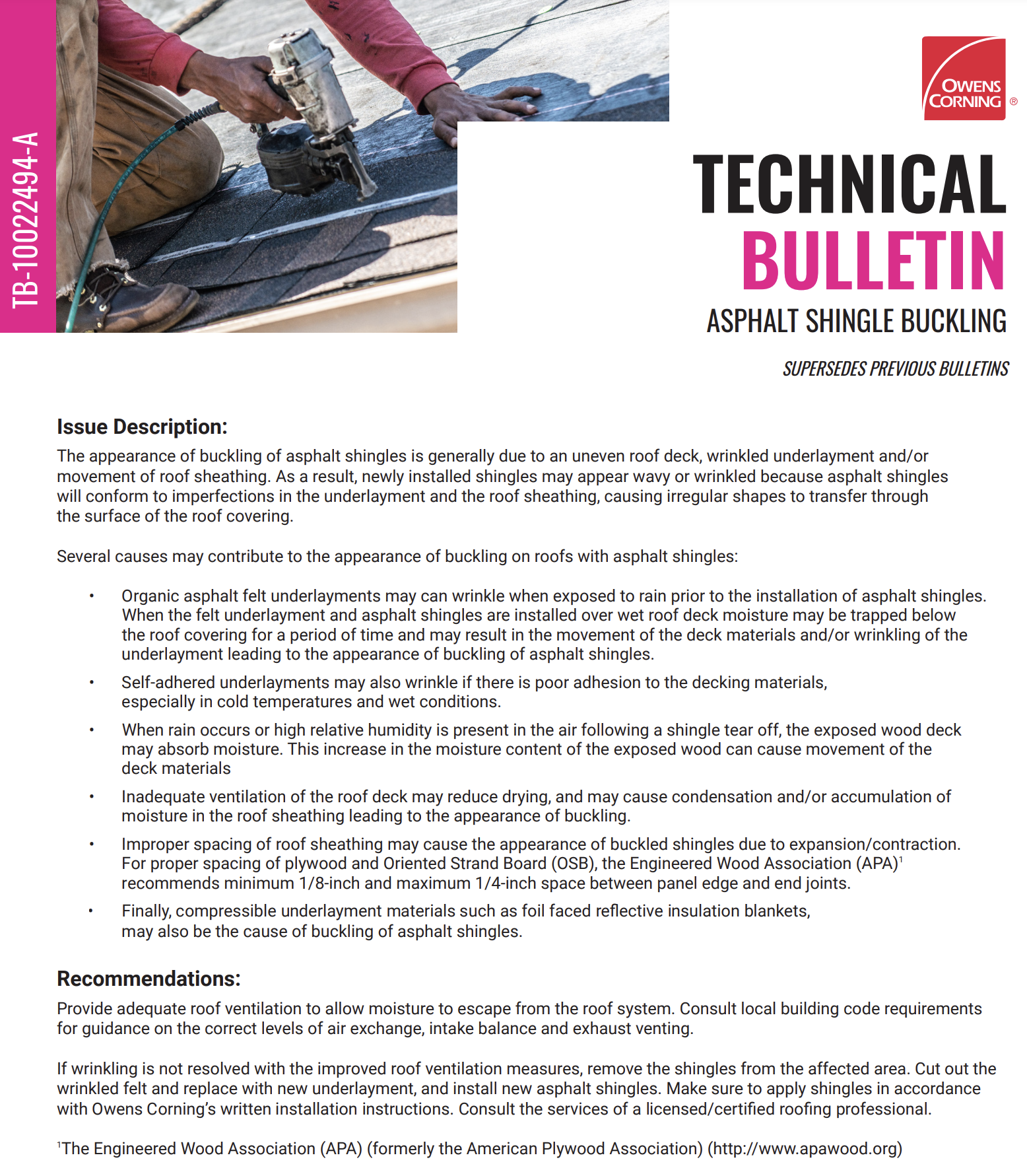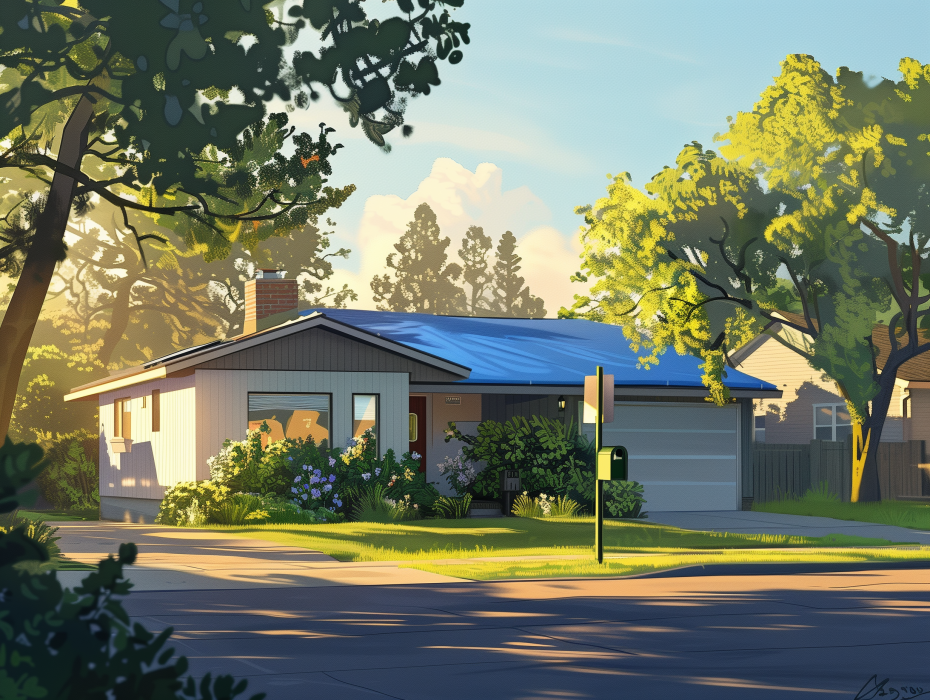Understanding Asphalt Shingle Buckling
Buckling of asphalt shingles is a common issue that detracts from the aesthetic appeal of roofs and may indicate underlying problems. This phenomenon typically arises due to an uneven roof deck, wrinkled underlayment, or movement in roof sheathing. New shingles may appear wavy or wrinkled as they conform to imperfections beneath them.
Key Causes of Asphalt Shingle Buckling
- Organic Asphalt Felt Underlayments:
- Wrinkles may form when exposed to rain before the installation of asphalt shingles.
- Installing shingles over a wet deck can trap moisture, leading to deck movement and underlayment wrinkling.
- Self-Adhered Underlayments:
- Poor adhesion, especially in cold or wet conditions, can cause wrinkling.
- Moisture Absorption:
- Exposed wood decks can absorb moisture from rain or high humidity, causing deck materials to move.
- Inadequate Ventilation:
- Poor ventilation reduces drying, causing condensation and moisture accumulation, leading to buckling.
- Improper Sheathing Spacing:
- Incorrect spacing of plywood or OSB can lead to expansion and contraction, causing buckling. The APA recommends a minimum 1/8-inch and maximum 1/4-inch space between panel edges and end joints.
- Compressible Underlayment Materials:
- Materials like foil-faced reflective insulation blankets can also cause buckling.
Recommendations to Prevent and Resolve Buckling
- Adequate Roof Ventilation:
- Ensure proper ventilation to allow moisture to escape. Check local building codes for guidelines on air exchange, intake balance, and exhaust venting.
- Addressing Wrinkling:
- If ventilation improvements do not resolve wrinkling, remove the affected shingles, cut out the wrinkled felt, replace it with new underlayment, and install new shingles according to Owens Corning’s installation instructions.
- Professional Consultation:
- Always consult a licensed/certified roofing professional for proper installation and repair.
How to Identify Buckling
- Visual Inspection:
- Look for wavy or wrinkled appearances on newly installed shingles.
- Check for uniformity and evenness on the roof surface.
- Check Ventilation:
- Inspect the attic and roof ventilation systems to ensure they are functioning correctly.
Conclusion
Proper installation, ventilation, and maintenance are key to preventing asphalt shingle buckling. Addressing moisture issues and adhering to recommended spacing and underlayment practices can help maintain the roof’s integrity and appearance.
For Immediate Service or Consultation
Contact Allied Emergency Services, INC.
Phone: 1-800-792-0212
Email: Info@AlliedEmergencyServices.com
Location: Serving Illinois, Wisconsin, and Indiana with a focus on the greater Chicago area.
If you require immediate assistance or have specific questions, our human support is readily available to help you.
Disclaimer: This article is intended for informational purposes only. For professional advice, consult experts in the field.










